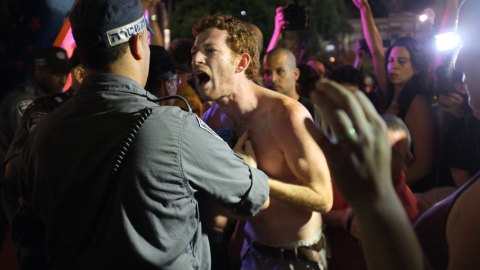How the Brain ‘Justifies’ Acts of Violence

For most of us, any violent act would be considered unjustifiable. It’s difficult for someone like you or I to get inside a killer’s head — to truly understand what he or she feels and thinks. It’s even harder for scientists to understand what goes on in the human brain. However, Pascal Molenberghs, from the School of Psychological Sciences, believes he has managed to get a peek through video games.
In the study, published in the journal Social Cognitive and Affective Neuroscience, Molenberghs had a group of participants sit down to play video games. During the play session, Molenberghs monitored their brain activity via functional magnetic resonance imaging (fMRI). The players were given scenarios where they were to imagine they were shooting either innocent civilians (unjustified violence) or enemy soldiers (justified violence).
Molenberghs discussed his finding in a press release, saying:
“When participants imagined themselves shooting civilians compared to soldiers, greater activation was found in the lateral orbitofrontal cortex (OFC), an important brain area involved in making moral decisions.”
“The more guilt participants felt about shooting civilians, the greater the response in the lateral OFC. When shooting enemy soldiers, no activation was seen in lateral OFC.”
This finding resonated with a similar study done by Alan Page Fiske and Tage Shakti Rai, authors of Virtuous Violence. After studying numerous cases of violent crimes — what some may see as meaningless acts of violence — Fiske said in a press release that they found reason and morality behind most:
“Except for a few psychopaths, hardly anybody harming anybody else is doing something that they intend to be evil. On the contrary, they intend to be doing something right and good.”
While none of this research should be used to justify any act of violence, it does help understand how, as a society, we should choose to punish and rehabilitate these kinds of individuals. As author Robert Perkinson explains, the original intent of American correctional facilities (as the name implies) was to rehabilitate prisoners. Tragically, this is no longer the case.
Read more at Science Daily.
Photo Credit: Ran Yaniv Hartstein/Flickr





